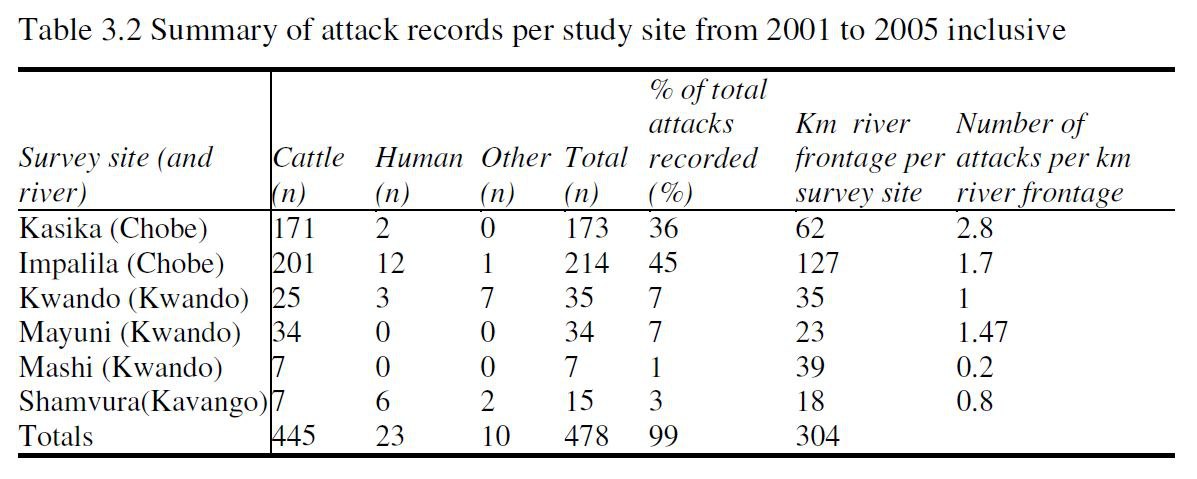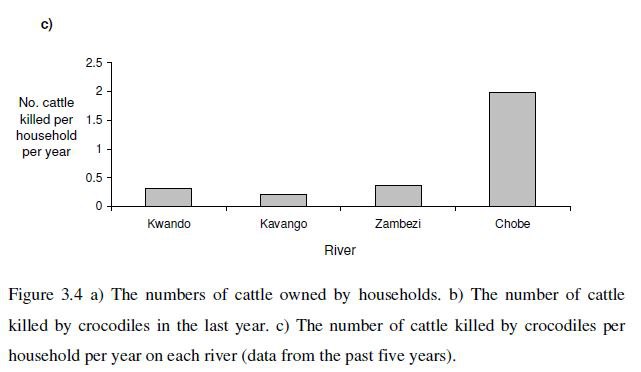
+- WildFact (https://wildfact.com/forum)
+-- Forum: Information Section (https://wildfact.com/forum/forum-information-section)
+--- Forum: Terrestrial Wild Animals (https://wildfact.com/forum/forum-terrestrial-wild-animals)
+---- Forum: Reptiles and Birds (https://wildfact.com/forum/forum-reptiles-and-birds)
+---- Thread: Crocodile, the killler of water (/topic-crocodile-the-killler-of-water)
RE: Crocodile, the killler of water - epaiva - 04-14-2017
Female Orinoco Crocodile defending its nest
RE: Crocodile, the killler of water - epaiva - 04-14-2017
Largest Orinoco Crocodile in captivity close to 5 mt long

*This image is copyright of its original author

*This image is copyright of its original author
RE: Crocodile, the killler of water - epaiva - 05-15-2017
Caiman crocodilus in the Venezuelan Llanos

*This image is copyright of its original author

*This image is copyright of its original author

*This image is copyright of its original author

*This image is copyright of its original author

*This image is copyright of its original author

*This image is copyright of its original author

*This image is copyright of its original author
Caiman crocodilus: a medium sized croc found in large numbers in the Venezuelan Llanos where they call them Baba or Babo, males grow from 1,80 mt to a maximum of 2,31 mt long and 58 kilograms, females grow from 1,20 mt to a maximum of 1,61 mt and 20 kg.
RE: Crocodile, the killler of water - epaiva - 05-22-2017
Caiman crocodilus in the Venezuelan Llanos
RE: Crocodile, the killler of water - epaiva - 05-22-2017
Caiman crocodilus in the Venezuelan Llanos

*This image is copyright of its original author

*This image is copyright of its original author

*This image is copyright of its original author

*This image is copyright of its original author
RE: Crocodile, the killler of water - Jimmy - 06-12-2017
Looks like a turf war... Marsh mugger displacing a gharial, Chitwan.

*This image is copyright of its original author

*This image is copyright of its original author

*This image is copyright of its original author
RE: Crocodile, the killler of water - OrinocoCroc - 07-04-2017
Nile crocodile predation on cattle in Namibia.
"Nile crocodiles pose a substantial threat to subsistence livelihoods whilst rural
communities have significant negative impacts on crocodiles (i) Estimates suggest an
annual loss of between ~255 and ~6864 cattle per year and damage to an estimated
71500 fishing nets per year in North Eastern Namibia. (ii) All crocodile size classes
showed a negative relationship with people at the inter- and intra-river levels. (iii)
Crocodile prey species showed a significant negative spatial relationship with cattle.
In total 489 cases of crocodile attack were recorded from 1993 to 2005 inclusive.
Table 3.2 summarizes records of crocodile attacks by survey site. Study sites on the
Chobe River (Impalila and Kasika) recorded the highest numbers of attacks as well as
the highest density of attacks per kilometre of river frontage. Figure 3.1a summarizes
species composition. Other species recorded included dogs, goats, a horse and a pig.
Twenty three cases of human attacks were recorded. Figure 3.1b summarizes some age
and sex criteria of cattle records. Adult female cattle made up nearly three quarters of
cattle depredations.
Figure 3.4 summarises a) cattle ownership per household, b) number of cattle
attacked per owner and c) rate of attacks on cattle per river. 71% of households
currently keep cattle (n=96). Almost half of the households that do own cattle have
between one and ten animals (n=44, 46%). Respondents reported a total of 176 cattle
and 39 goats killed by crocodiles in the last year, and 435 cattle killed over the last five
years. On average each household lost 0.6 head of cattle per year (SD+-1.57). The
Chobe study site recorded much higher levels of cattle depredations (1.97 cattle per
household per year) relative to the Kwando, Kavango and Zambezi study sites (0.32,
0.21 and 0.36
respectively).
Approximately 89 cattle are killed per year within the six study sites (SD+-26.5).
Extrapolation estimates approximately 255 cattle attacked per year in North Eastern
Namibia, or 0.29 cattle per kilometre of river frontage in NE Namibia.
Approximately 0.6 cattle are killed per household per year within the five study
sites (SD+-1.57). Extrapolation estimates a figure of 6864 cattle attacked by crocodiles
per year in North Eastern Namibia, with about half of these occurring on the Chobe
river. For direct comparison with the HCC survey estimates, this translates to
approximately 7.8 cattle per km of river frontage per year".
https://spiral.imperial.ac.uk/bitstream/10044/1/5297/1/Aust-PW-2009-PhD-Thesis.pdf
The ecology, conservation and management of Nile crocodiles Crocodylus niloticus in a human dominated landscape
Patrick Welby Aust
Imperial College London
Division of Biology
May 2009
![]()
![]()
![]()
![]()
![]()
https://spiral.imperial.ac.uk/bitstream/10044/1/5297/1/Aust-PW-2009-PhD-Thesis.pdf
The ecology, conservation and management of Nile crocodiles Crocodylus niloticus in a human dominated landscape
Patrick Welby Aust
Imperial College London
Division of Biology
May 2009

*This image is copyright of its original author

*This image is copyright of its original author

*This image is copyright of its original author

*This image is copyright of its original author

*This image is copyright of its original author
RE: Crocodile, the killler of water - OrinocoCroc - 07-09-2017

*This image is copyright of its original author
https://travelafricamag.com/natures-best-photography-africa-2016-winners-gallery/#jp-carousel-5079
RE: Crocodile, the killler of water - epaiva - 07-10-2017
(07-09-2017, 01:44 AM)OrinocoCroc Wrote:
*This image is copyright of its original author
https://travelafricamag.com/natures-best-photography-africa-2016-winners-gallery/#jp-carousel-5079
@"Oronococroc"
Incredible picture
RE: Crocodile, the killler of water - epaiva - 07-10-2017
American Crocodile (Crocodylus acutus)

*This image is copyright of its original author

*This image is copyright of its original author

*This image is copyright of its original author

*This image is copyright of its original author
The American crocodile (Crocodylus acutus) is the most widespread of the four extant species of crocodiles from the Americas. Populations occur from the Atlantic and Pacific coasts of southern Mexico to South America as far as Peru and Venezuela. It also lives on many of the Caribbean islands such as Cuba, Jamaica, Hispaniola and Grand Cayman. Within the United States, the American crocodile's distribution is limited to Puerto Rico and the southern half of Florida. Males can reach lengths of 5 m (16,37 ft), weighing up to 700 kg (1540 lb). On average, mature males are more in the range of 4.1 m (13 ft) to 4.8 m (16 ft) in length weighing about 400 kg (880 lb).As with other crocodile species, females are smaller; rarely exceeding 3.35 m (11 ft). largest American Crocodiles are found in Costa Rica with the biggest ones reaching 5 m (16 ft) and the smaller ones are found in the Caribean Islands where they reach 3,60 mt (12 ft,) in Florida larger crocs measure close to 4 mt long.
RE: Crocodile, the killler of water - epaiva - 07-10-2017
(11-19-2016, 08:51 PM)Tshokwane Wrote: Credits to Rupak De.
The award winning picture of the male gahrial with scores of recently hatched young ones either on its back or hovering closeby in the river Chambal in Etawah. This type of caregiving by male parent is indeed an exceedingly rare sight.
*This image is copyright of its original author
Incredible picture
RE: Crocodile, the killler of water - epaiva - 07-10-2017
(12-16-2016, 08:37 PM)Paleosuchus Wrote: The orinoco crocodile, such a marvelous yet largely unrecognized species
*This image is copyright of its original author
*This image is copyright of its original author
*This image is copyright of its original author
@"Paleosuchus"
Very nice pictures
RE: Crocodile, the killler of water - epaiva - 07-13-2017
American Crocodile

*This image is copyright of its original author
(Crocodylus acutus)
*This image is copyright of its original author
RE: Crocodile, the killler of water - epaiva - 07-13-2017
American alligator (Alligator mississippiensis)

*This image is copyright of its original author

*This image is copyright of its original author

*This image is copyright of its original author
The American alligator (Alligator mississippiensis), sometimes referred as a gator or common alligator, is a large crocodilian reptile endemic to the southeastern United States. Adult male American alligators measure 3.4 to 4,58 m (11 to 15 ft) in length, and can weigh up to 453 to 500 kg (1,000 to 1,100 lb). Females are smaller, very few measure 3 m (9.8 ft). The American alligator inhabits freshwater wetlands, such as marshes and cypress swamps from Texas to North Carolina. It is distinguished from the sympatric American crocodile by its broader snout, with overlapping jaws and darker coloration, and is less tolerant of saltwater but more tolerant of cooler climates than the American crocodile, which is found only in tropical climates.
Alligators are apex predators and consume fish, amphibians, reptiles, birds, and mammals. Hatchlings feed mostly on invertebrates. They play an important role as ecosystem engineers in wetland ecosystems through the creation of alligator holes, which provide both wet and dry habitats for other organisms. During the breeding season, alligators bellow to declare territory and locate suitable mates. Male alligators use infrasound to attract females. Eggs are laid in a nest of vegetation, sticks, leaves, and mud in a sheltered spot in or near the water. Young are born with yellow bands around their bodies and are protected by their mother for up to one year. Pictures taken from The Alligator Book C. C. Lockwood
RE: Crocodile, the killler of water - epaiva - 07-13-2017
American alligator (Alligator mississippiensis)

*This image is copyright of its original author

*This image is copyright of its original author



